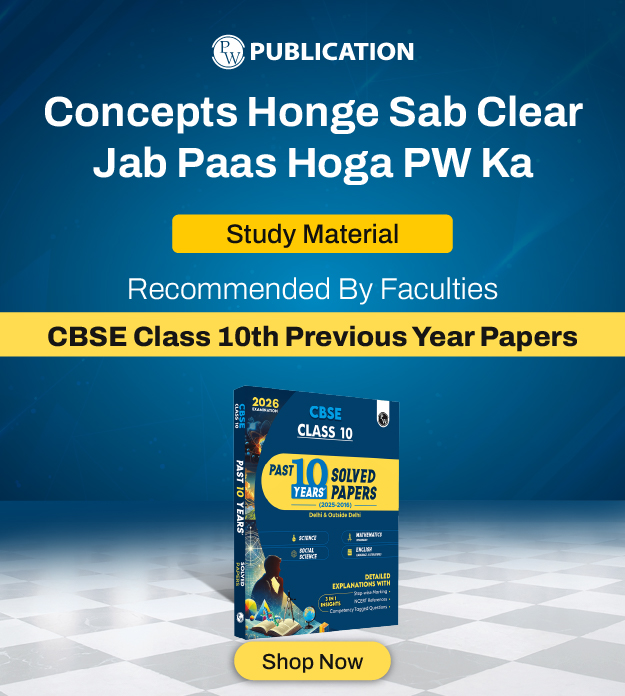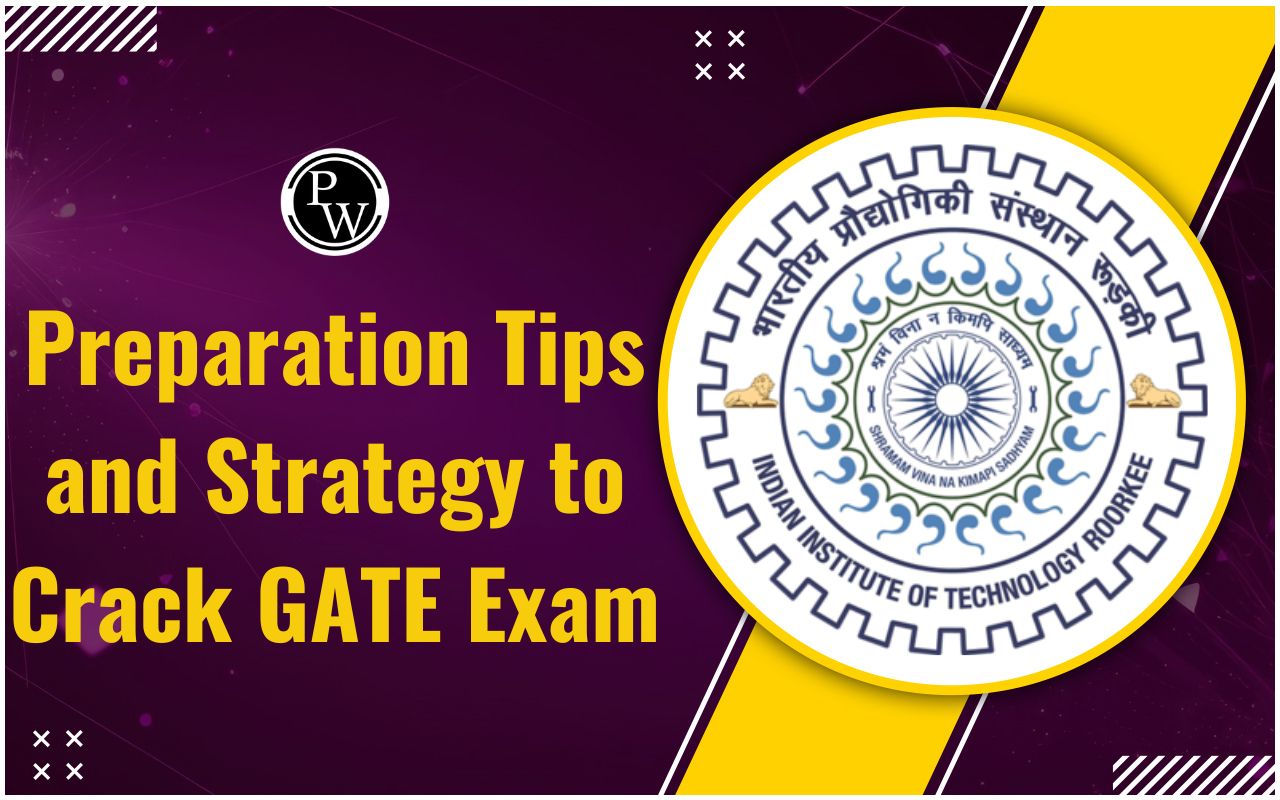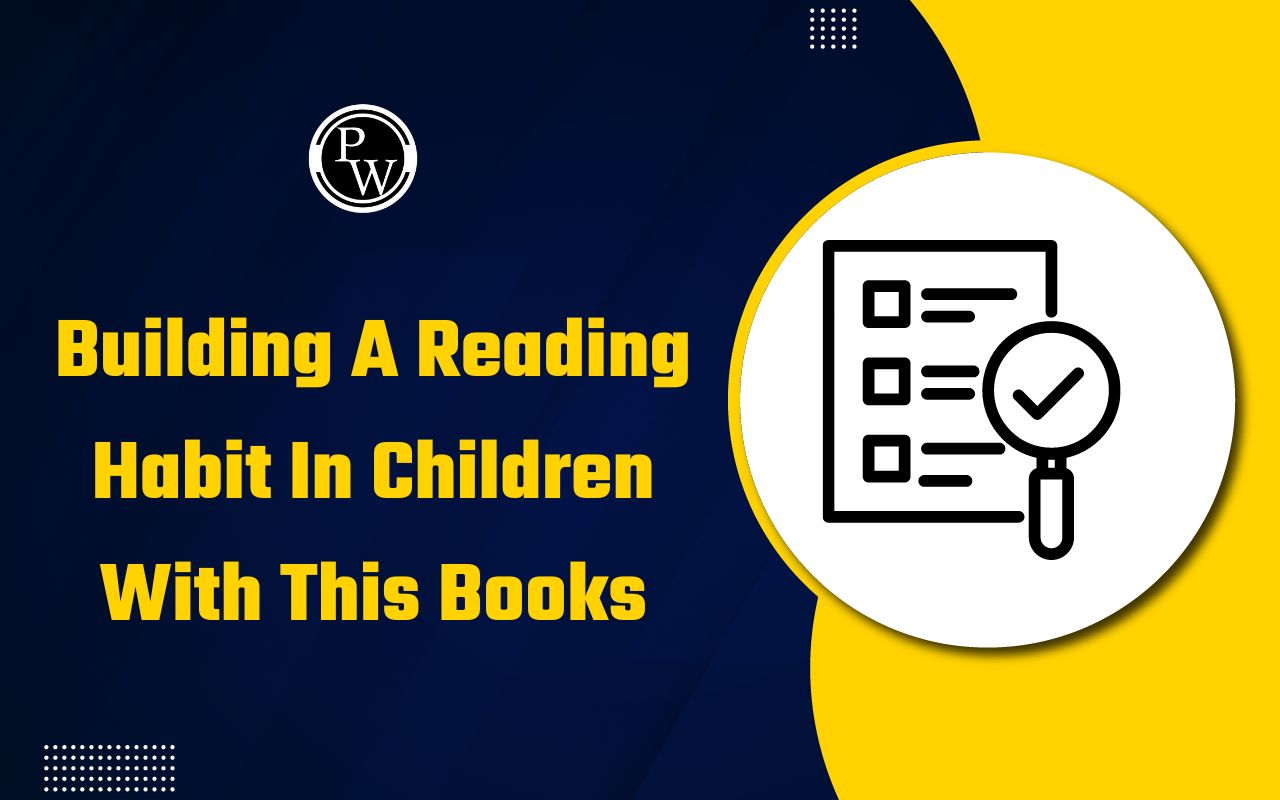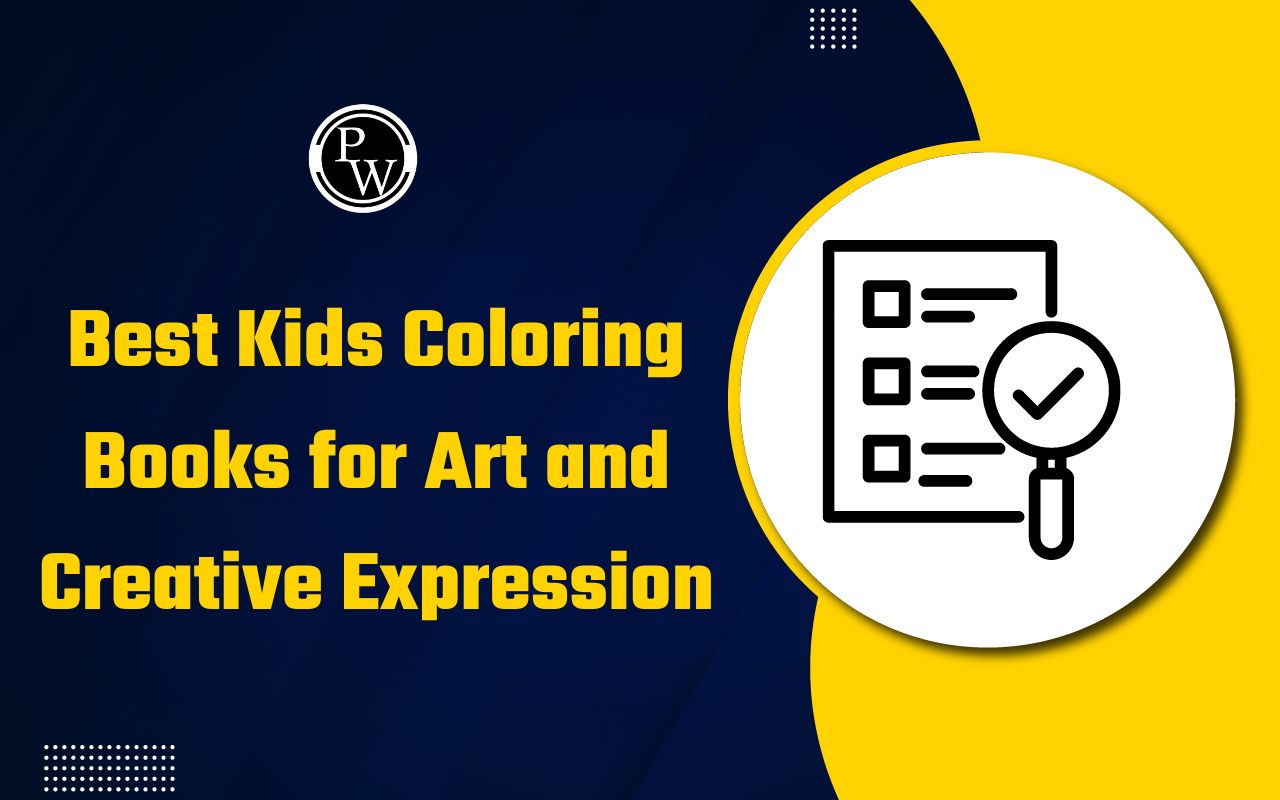NCERT Solutions for Class 10 Science Chapter 10 Light Reflection and Refraction
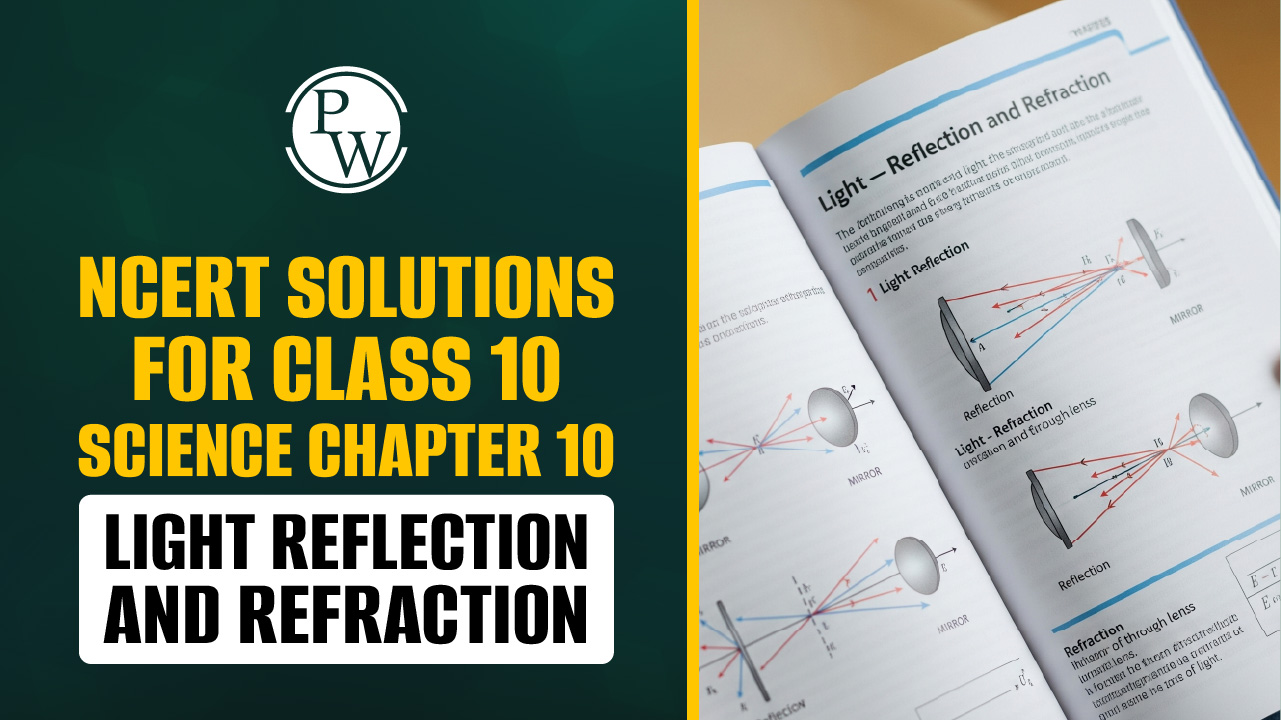
Preparing for the Class 10 board exams can be a bit stressful, especially when it comes to Science. Since the subject is divided into Physics, Chemistry, and Biology, many students find it tricky to manage all three. One of the crucial chapters of Class 10 Physics is Light: Reflection and Refraction, which explains how light behaves when it hits a surface or passes through different materials. Concepts like reflection, refraction, image formation by mirrors and lenses, and related formulas are all part of this chapter.
To make things easier, we’ve provided the complete Class 10 Light NCERT Solutions below. These solutions cover every question from the textbook in a simple and step-by-step format. Whether you're trying to clear your concepts or revise quickly before the exam, these answers will help you a lot. Along with the light reflection and refraction class 10 solutions, you’ll also find a short summary of the chapter to help you understand the basics better.
Check Out: CBSE Class 10th Books
NCERT Solutions for Class 10 Science Chapter 10 Light Reflection and Refraction
If you're looking to understand the chapter Light: Reflection and Refraction Class 10 in a simple and effective way, then the Class 10 Light NCERT Solutions provided below will be an ideal choice. Get full light reflection and refraction NCERT Solutions here.
NCERT Solutions for Class 10 Science Chapter 10 Exercise 10.1 Page: 168
1. Define the principal focus of a concave mirror.
Answer- The principal focus of a concave mirror is the point on the principal axis where parallel light rays that strike the mirror converge after reflecting off its surface. This convergence occurs due to the mirror's curved shape, which directs the parallel rays to meet at this specific point.
2. The radius of curvature of a spherical mirror is 20 cm. What is its focal length?
Answer- Radius of curvature (R) = 20 cm Radius of curvature of the spherical mirror = 2 × Focal length (f) R = 2f f= R/2 = 20 / 2 = 10 Therefore, the focal length of the spherical mirror is 10 cm.
3. Name the mirror that can give an erect and enlarged image of an object.
Answer- A convex mirror is the type of mirror that can provide an erect and diminished image of an object. A concave mirror, on the other hand, can produce an erect and enlarged image only when the object is placed between the focal point and the mirror (i.e., within the focal length).
4. Why do we prefer a convex mirror as a rear-view mirror in vehicles?
Answer- A convex mirror is widely used as a rear-view mirror in vehicles because it provides a larger field of view compared to flat or concave mirrors. This is due to the fact that convex mirrors diverge light rays, allowing them to spread out and cover a broader area. As a result, they produce an erect, virtual, and diminished image of objects, making it easier for drivers to see more of the traffic behind them.
Read More: NCERT Solutions for Class 10 Science Chapter 1
NCERT Solutions for Class 10 Science Chapter 10 Exercise 10.2 Page No: 171
1. Find the focal length of a convex mirror whose radius of curvature is 32 cm.
Answer- Radius of curvature (R) = 32 cm Radius of curvature = 2 × Focal length (f) R= 2f f = R/2 = 32/2 = 16 Therefore, the focal length of the given convex mirror is 16 cm.
2. A concave mirror produces three times magnified (enlarged) real image of an object placed at 10 cm in front of it. Where is the image located?
Answer-
Magnification produced by a spherical mirror:Object distance (u) = – 10 cm v = 3 × (- 10) = – 30 cm Therefore, the negative sign indicates that an inverted image is formed in front of the given concave mirror at a distance of 30 cm.
Read More: NCERT Solutions for Class 10 Science Chapter 2
NCERT Solutions for Class 10 Science Chapter 10 Page No: 176
1. A ray of light travelling in air enters obliquely into water. Does the light ray bend towards the normal or away from the normal? Why?
Answer- When a light ray travels from an optically rarer medium, like air, to an optically denser medium, such as water, the light ray slows down due to the higher refractive index of the denser medium. As a result, it bends towards the normal line, which is an imaginary line perpendicular to the surface at the point of incidence. This bending of light towards the normal is a direct consequence of the change in the light's speed as it moves between different media.
2. Light enters from air to glass, having a refractive index 1.50. What is the speed of light in the glass? The speed of light in vacuum is 3 x 10 8 ms -1 .
Answer- Refractive index of a medium (nm) = Speed of light in vacuum/Speed of light in the medium Speed of light in vacuum (c) = 3 × 10 8 m/s Refractive index of glass (ng) = 1.50 Speed of light in the glass (v) = Speed of light in vacuum/ Refractive index of glass = c/ng =3 × 10 8 /1.50 = 2x 10 8 ms -1 .
3. Find out, from the table, the medium having the highest optical density. Also, find the medium with the lowest optical density.
|
Material medium |
Refractive index |
Material medium |
Refractive index |
|
Air |
1.0003 |
Canada Balsam |
1.53 |
|
Ice |
1.31 |
– |
– |
|
Water |
1.33 |
Rock salt |
1.54 |
|
Alcohol |
1.36 |
– |
– |
|
Kerosene |
1.44 |
Carbon disulphide |
1.63 |
|
Fused quartz |
1.46 |
Dense flint glass |
1.65 |
|
Turpentine oil |
1.47 |
Ruby |
1.71 |
|
Benzene |
1.50 |
Sapphire |
1.77 |
|
Crown glass |
1.52 |
Diamond |
2.42 |
Answer-
Lowest optical density = Air Highest optical density = Diamond The optical density of a medium is inversely related to its refractive index. A medium with a high refractive index, like diamond, will have a high optical density, meaning it bends light significantly and slows it down more compared to a medium with a lower refractive index, like air. This explains why air has the lowest optical density and diamond has the highest.
Read More: NCERT Solutions Class 10 Science Chapter 3
4. You are given kerosene, turpentine and water. In which of these does the light travel fastest? Use the information given in the table.
|
Material medium |
Refractive index |
Material medium |
Refractive index |
|
Air |
1.0003 |
Canada Balsam |
1.53 |
|
Ice |
1.31 |
– |
– |
|
Water |
1.33 |
Rock salt |
1.54 |
|
Alcohol |
1.36 |
– |
– |
|
Kerosene |
1.44 |
Carbon disulphide |
1.63 |
|
Fused quartz |
1.46 |
Dense flint glass |
1.65 |
|
Turpentine oil |
1.47 |
Ruby |
1.71 |
|
Benzene |
1.50 |
Sapphire |
1.77 |
|
Crown glass |
1.52 |
Diamond |
2.42 |
Answer-
-
Refractive Index Relationship: The speed of light is inversely proportional to the refractive index of a medium. This means that as the refractive index decreases, the speed of light in that medium increases.
-
Comparison: Since water has a lower refractive index compared to kerosene and turpentine, light travels faster in water than in these other substances.
5. The refractive index of diamond is 2.42. What is the meaning of this statement?
Answer- The refractive index of a medium tells us how much the speed of light is reduced compared to its speed in a vacuum. For a diamond with a refractive index of 2.42:
-
Speed Reduction: The speed of light in diamond is reduced to 1/2.42 of its speed in a vacuum.
This reduction occurs because light travels more slowly through mediums with higher refractive indices due to greater optical density.
Read More: NCERT Solutions for Class 10 Science Chapter 6
NCERT Solutions for Class 10 Science Chapter 10 Page No: 184
1. Define 1 dioptre of power of a lens.
Answer- 1 dioptre (D) is defined as the power of a lens with a focal length of 1 meter.
2. A convex lens forms a real and inverted image of a needle at a distance of 50 cm from it. Where is the needle placed in front of the convex lens if the image is equal to the size of the object? Also, find the power of the lens.
Answer- The position of the image should be at 2F since the image is real and the same size. It is given that the image of the needle is formed at a distance of 50 cm from the convex lens. Therefore, the needle is placed in front of the lens at a distance of 50 cm. Object distance (u) = – 50 cm Image distance, (v) = 50 cm Focal length = f According to the lens formula,
3. Find the power of a concave lens of focal length 2 m.
Answer- The focal length of the concave lens (f) = 2 m Power of lens (P) = 1/f = 1/ (-2) = -0.5D Page No: 185
Exercise
1. Which one of the following materials cannot be used to make a lens?
(a) Water
(b) Glass
(c) Plastic
(d) Clay
Answer –
(d) Clay cannot be used to make a lens because it is not transparent. For a lens to function properly, it must be able to transmit light through it, which requires the material to be transparent. Since clay is opaque and does not allow light to pass through, it cannot be used to make a lens that would focus or refract light. Lenses are typically made from materials like glass or plastic, which are transparent and can bend light to form images.
2. The image formed by a concave mirror is observed to be virtual, erect and larger than the object. Where should be the position of the object?
(a) Between the principal focus and the centre of curvature
(b) At the centre of curvature
(c) Beyond the centre of curvature
(d) Between the pole of the mirror and its principal focus.
Answer-
(d) The position of the object should be between the pole of the mirror and its principal focus.
3. Where should an object be placed in front of a convex lens to get a real image of the size of the object?
(a) At the principal focus of the lens
(b) At twice the focal length
(c) At infinity
(d) Between the optical centre of the lens and its principal focus.
Answer –
(b) The object should be placed at twice the focal length
4. A spherical mirror and a thin spherical lens have a focal length of -15 cm. The mirror and the lens are likely to be
(a) both concave
(b) both convex
(c) the mirror is concave, and the lens is convex
(d) the mirror is convex, but the lens is concave
Answer –
(a) Both are likely to be concave.
Read More: NCERT Solutions for Class 10 Science Chapter 7
NCERT Solutions for Class 10 Science Chapter 10 Page No: 186
5. No matter how far you stand from a mirror, your image appears erect. The mirror is likely to be
(a) plane
(b) concave
(c) convex
(d) either plane or convex
Answer –
(d) The mirrors are likely to be either plane or convex
6. Which of the following lenses would you prefer to use while reading small letters found in a dictionary?
(a) A convex lens of focal length 50 cm
(b) A concave lens of focal length 50 cm
(c) A convex lens of focal length 5 cm
(d) A concave lens of focal length 5 cm
Answer –
(c) A convex lens of focal length 5 cm can be used while reading small letters found in a dictionary
7. We wish to obtain an erect image of an object, using a concave mirror of focal length 15 cm. What should be the range of distance of the object from the mirror? What is the nature of the image? Is the image larger or smaller than the object? Draw a ray diagram to show the image formation in this case.
Answer- Range of the distance of the object = 0 to 15 cm from the pole of the mirror. Nature of the image = virtual, erect, and larger than the object.
8. Name the type of mirror used in the following situations.
(a) Headlights of a car
(b) Side/rear-view mirror of a vehicle
(c) Solar furnace
Support your answer with a reason.
Answer-
(a) Concave Mirror : Concave mirrors are used in car headlights because they can focus light into a powerful parallel beam. When the light source is placed at the principal focus of the concave mirror, the mirror reflects the light in a parallel direction, which is ideal for illuminating the road.(b) Convex Mirror : Convex mirrors are used as side or rear-view mirrors in vehicles because they provide a wide field of view. This allows drivers to see more of the area behind and beside the vehicle, enhancing safety.(c) Concave Mirror : Concave mirrors are used in solar furnaces because they can concentrate parallel rays of sunlight to a single point, the principal focus. This concentration of light is useful for generating high temperatures required in solar energy applications.
9. One-half of a convex lens is covered with black paper. Will this lens produce a complete image of the object? Verify your answer experimentally. Explain your observations.
Answer-
Yes, it will produce a complete image of the object, even when the lower half of the lens is covered with black paper. This can be verified by observing the image of a distant object, such as a tree, on a screen. Although the image will still be visible, the intensity or brightness of the image will be reduced due to the obstruction of light from the covered part of the lens.
10. An object 5 cm in length is held 25 cm away from a converging lens of focal length 10 cm. Draw the ray diagram and find the position, size and nature of the image formed.
Answer- Height of the object, h 0 = 5 cm Distance of the object from converging lens, u = -25 cm Focal length of a converging lens, f = 10 cm Using the lens formula, Thus, the image is inverted and formed at a distance of 16.7 cm behind the lens and measures 3.3 cm. The ray diagram is shown below.
Check Out: CBSE Class 10th Question Banks
11. A concave lens of focal length 15 cm forms an image 10 cm from the lens. How far is the object placed from the lens? Draw the ray diagram.
Answer- Focal length of concave lens (OF 1 ), f = – 15 cm Image distance, v= – 10 cm According to the lens formula,The negative value of u indicates that the object is placed 30 cm in front of the lens. This is shown in the following ray diagram.
12. An object is placed at a distance of 10 cm from a convex mirror of focal length 15 cm. Find the position and nature of the image.
Answer- Focal length of convex mirror (f) = +15 cm Object distance (u) = – 10 cm According to the mirror formula,The image is located at a distance of 6 cm from the mirror on the other side of the mirror. The positive and a value of less than 1 magnification indicates that the image formed is virtual, erect, and diminished.
13. The magnification produced by a plane mirror is +1. What does this mean?
Answer- The positive sign indicates that the image formed by a plane mirror is virtual and erect. Since the magnification is 1, it means that the image is of the same size as the object.
14. An object 5 cm is placed at a distance of 20 cm in front of a convex mirror of radius of curvature 30 cm. Find the position, nature and size of the image.
Answer- Object distance (u) = – 20 cm Object height (h) = 5 cm Radius of curvature (R) = 30 cm Radius of curvature = 2 × Focal length R = 2f f = 15 cm According to the mirror formula,The positive value of image height indicates that the image formed is erect. Hence, the image formed is erect, virtual, and smaller in size.
15. An object of size 7.0 cm is placed at 27 cm in front of a concave mirror of focal length 18 cm. At what distance from the mirror should a screen be placed so that a sharply focused image can be obtained? Find the size and nature of the image.
Answer- Object distance (u) = – 27 cm Object height (h) = 7 cm Focal length (f) = – 18 cm According to the mirror formula,The negative value of image height indicates that the image formed is inverted.
16. Find the focal length of a lens of power -2.0 D. What type of lens is this?
Answer- Power of lens (P) = 1/f P = -2D f = -1/2 = -0.5 m A concave lens has a negative focal length. Therefore, it is a concave lens.
17. A doctor has prescribed a corrective lens of power +1.5 D. Find the focal length of the lens. Is the prescribed lens diverging or converging?
Answer- Power of lens (P) = 1/f P = 1.5D f = 1/1.5 = 10/15 = 0.66 m A convex lens has a positive focal length. Therefore, it is a convex lens or a converging lens.
Check Out: CBSE Class 10th Previous Year Papers
Summary of Class 10 Science Chapter 10 Light Reflection and Refraction
-
Light and Its Nature: Light is a form of energy that travels in a straight line and allows us to see objects. It shows phenomena like reflection and refraction.
-
Reflection of Light: It is the bouncing back of light from a surface. The laws of reflection state that the angle of incidence is equal to the angle of reflection, and both rays lie in the same plane.
-
Types of Mirror: Mirrors are of two types, plane and spherical. Plane mirrors form virtual, erect, and same-sized images. Spherical mirrors are either concave or convex.
-
Image Formation by Spherical Mirrors: Concave mirrors can form real and inverted images, or virtual and erect ones, depending on the object position. Convex mirrors always form virtual, erect, and diminished images.
-
Refraction of Light: Refraction is the bending of light when it passes from one medium to another. It happens due to a change in the speed of light.
-
Laws of Refraction: The incident ray, refracted ray, and normal lie in the same plane, and the ratio of the sine of angle of incidence to the sine of angle of refraction is constant (Snell’s Law).
-
Refractive Index: It tells how much the light bends in a medium. A higher refractive index means more bending.
-
Lenses and Their Types: Lenses are transparent materials with curved surfaces. Convex lenses converge light rays, and concave lenses diverge them.
-
Image Formation by Lenses: Convex lenses can form both real and virtual images, while concave lenses always form virtual, erect, and diminished images.
Benefits of Solving NCERT Solutions Class 10 Science Chapter 10
-
Builds Strong Concept Clarity: NCERT solutions help you understand the basics of light reflection and refraction in a simple and clear way. This makes learning easier and helps you remember things for longer.
-
Perfect for Exam Preparation: Since most board questions come directly from the textbook, solving the class 10 science chapter 10 question answer regularly will help you during exams.
-
Covers Every Topic in Detail: Whether it’s about concave mirrors or refraction through lenses, the light class 10 NCERT solutions explain each topic thoroughly so you don’t miss anything important.
-
Improves Answer Writing Skills: These solutions teach you how to write step-by-step, to-the-point answers, exactly what examiners look for in class 10 light NCERT solutions.
-
Saves Time During Revisions: When you revise from NCERT solutions, you get everything in one place, questions, diagrams, formulas, saving your time and effort.
Check Out: CBSE Class 10th Revision Books
NCERT Solutions for Class 10 Science Chapter 10 FAQs
1. What is the main concept of Chapter 10 Light: Reflection and Refraction?
This chapter explains how light behaves when it bounces off surfaces (reflection) and when it bends while passing through different mediums (refraction).
2. Why is this chapter important for exams?
It is a scoring chapter with many diagram- and formula-based questions that often appear in board exams.
3. What is the difference between reflection and refraction?
Reflection is the bouncing back of light from a surface, while refraction is the bending of light when it travels from one medium to another.
4. What are the laws of reflection?
The angle of incidence is equal to the angle of reflection, and both rays lie in the same plane as the normal.
5. What is a real image and a virtual image?
A real image can be projected on a screen (formed by actual intersection of rays), while a virtual image cannot (formed by the apparent intersection of rays).





